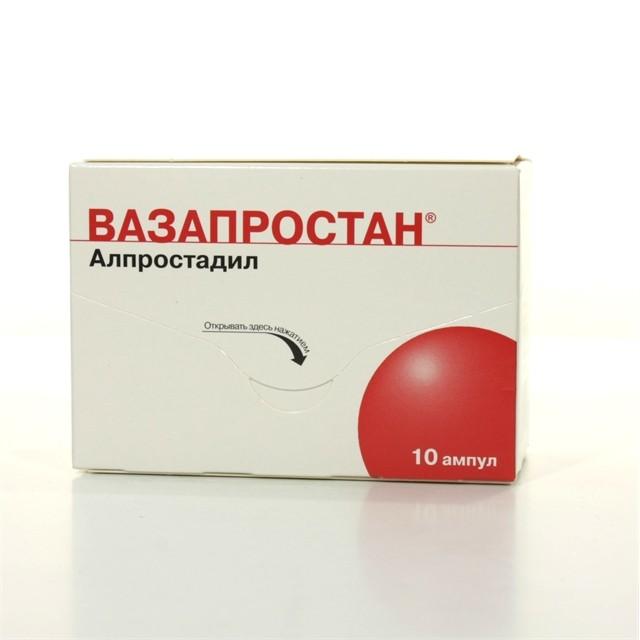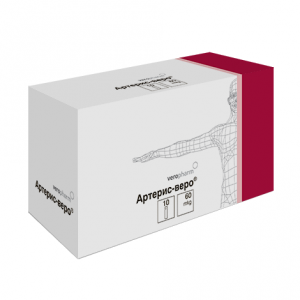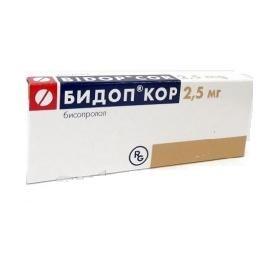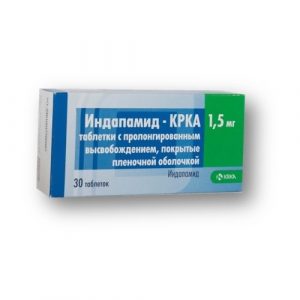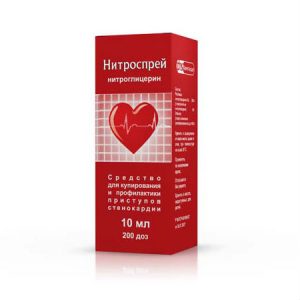Description
Release form
Lyophilisate for the preparation of an infusion solution.
Packing
10 pcs.
Pharmacological action
Vasodilating, antiaggregatory.
Vazaprostan is a prostaglandin E1 drug. Improves microcirculation and peripheral circulation.
Reduces the tone of arterioles and postcapillary sphincters, reduces OPSS without changing blood pressure, increases coronary blood flow and left ventricular ejection fraction.
Improves rheological properties of blood by reducing platelet adhesion and aggregation, reducing aggregation and improving red blood cell deformability, increasing fibrinolytic activity and lowering blood viscosity.
has an effect on metabolism, increases utilization of glucose and oxygen, inhibits the release of free radicals and lysosomal enzymes from granulocytes and macrophages, stimulates protein synthesis, has a beneficial effect on lipid metabolism (suppresses cholesterol synthesis and decreases LDL concentration), inhibits the proliferation and mitosis of smooth muscle cells.
Against the background of treatment with Vazaprostan, the severity of the pain syndrome at rest decreases, the healing of trophic ulcers accelerates, and remission occurs during the course of the disease.
Use during pregnancy and lactation
The use of the drug during pregnancy is not recommended.
If necessary, the appointment of the drug during lactation should decide on the termination of breastfeeding.
Special instructions
During treatment with vazaprostan in patients with signs of renal and heart failure, the fluid volume should be limited to 50-100 ml / day.
In the course of therapy, blood pressure, heart rate should be monitored, if necessary, fluid balance control, measurement of central venous pressure, echocardiography. The clinical effectiveness of the treatment is evaluated after 3 weeks of therapy.
On the background of therapy with vazaprostan, the appearance of a C-reactive protein may be observed during a biochemical study of blood.
Composition of
1 ampoule contains alprostadil (in the form of alpha-cyclodextrin) 20 mcg
excipients: lactose alfadex.
Dosage and administration
vazaprostan can be administered iv and iv.
To obtain a solution for intra-arterial administration, 20 μg (contents of one ampoule) should be dissolved in 50 ml of physiological saline. When carrying out an intravenous infusion, 25 ml of the obtained solution (10 μg alprostadil) should be administered for 60-120 minutes using a special device for intravenous infusion. If necessary (especially with necrosis), the dose can be increased to 50 ml (20 μg). If the drug is administered through an established catheter, intravenous infusion is carried out for 12 hours at a dose of 0.1-0.6 ng / kg body weight per minute (corresponds to 12.5-25 ml of a Vazaprostan solution).
To obtain a solution for intravenous administration, 40 μg (the contents of two ampoules) of dry matter should be dissolved in 50-250 ml of physiological saline and the resulting solution should be injected intravenously for 2 hours 2 times / day, or dissolve 60 μg (contents of 3 ampoules) in 50-250 ml of physiological saline and administer iv drip for 3 hours 1 time / day.
In patients with impaired renal function (creatinine concentration of more than 1.5 mg / dl), the intravenous administration of vazaprostan should be started with 10 mg 2 times / day, the duration of each infusion is 2 hours. With good tolerance, the dose can be increased for 2-3 days to the usual. The duration of one course of treatment should not exceed 4 weeks.
Side effects
From the cardiovascular system: palpitations, arterial hypotension, headache in isolated cases – frequent attacks of angina pectoris, development of pulmonary edema, symptoms of heart failure.
From the digestive system: dyspeptic phenomena, increased activity of hepatic transaminases.
Other: leukopenia, leukocytosis with prolonged therapy (more than 4 weeks) in isolated cases of tubular bone hyperostosis.
Local reactions: edema, hyperemia, pain at the injection site.
Drug interaction
With the simultaneous use of vazaprostan, it can enhance the hypotensive effect of antihypertensive drugs, peripheral vasodilators, antianginal drugs.
With the combined use of vazaprostan with anticoagulants, antiplatelet agents increases the likelihood of developing hemorrhagic syndrome.
Overdose
Symptoms: decreased blood pressure, hyperemia of the skin, weakness.
Treatment: The drug infusion should be slowed or stopped if symptomatic therapy is required.
Storage Conditions
The product should be stored at a temperature not exceeding 25 ° C.
active substance
Alprostadil
Terms leave through pharmacies
In retseptu
Dosage form
solution for infusions
Indications
Indications
microcirculation disorders
